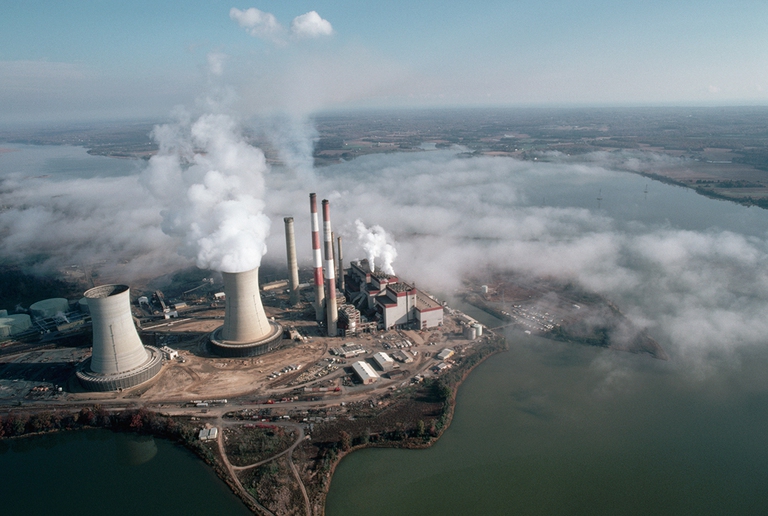
A group of experts in Tokyo suggested pouring radioactive water from Fukushima into the open sea. A marine biochemist explains the consequences of this absurd decision.
There are nearly 2,500 coal plants in some stage of development worldwide. These will produce more than four times as much emissions as those which are permissible if global warming is to be kept below 2 degrees Celsius compared to pre-industrial levels. The alarm was raised by the Coal Gap report released by Climate Action
There are nearly 2,500 coal plants in some stage of development worldwide. These will produce more than four times as much emissions as those which are permissible if global warming is to be kept below 2 degrees Celsius compared to pre-industrial levels. The alarm was raised by the Coal Gap report released by Climate Action Tracker, which highlights that goals of limiting global temperature rises to 1.5 or 2 degrees are incompatible with current coal production levels.
Existing coal plants on their own will produce emissions 50% above “pathways” for limiting warming to 2 degrees between now and 2030. If plants in the pipeline are also taken into consideration emissions will be at least 400% above permissible levels over the next 15 years, and if more are planned total emissions will be even higher.
“There is only one solution to the problem of having too many coal plants on the books,” says Ecofys renewable energy researcher Pieter Van Breevoort, one of the report’s authors. “The only thing you can do is cancel them.”
The news comes after the United Kingdom announced last month it would phase out all coal plants within a decade. The last deep-pit coal mine in the country was shut down in December.
Still, the European Union and eight non-European countries — China, India, Indonesia, Japan, South Africa, South Korea, the Philippines and Turkey — are all planning to install at least 5 gigawatts of new coal capacity.
“If renewables take off as fast as is currently expected, many of these planned coal plants could be stranded investments,” said Markus Hagemann of the New Climate Institute. The report’s authors say they hope this goal will result in many — or perhaps most — of the planned plants being scrapped.
Find out more: visit Behind Energy
Siamo anche su WhatsApp. Segui il canale ufficiale LifeGate per restare aggiornata, aggiornato sulle ultime notizie e sulle nostre attività.
![]()
Quest'opera è distribuita con Licenza Creative Commons Attribuzione - Non commerciale - Non opere derivate 4.0 Internazionale.
A group of experts in Tokyo suggested pouring radioactive water from Fukushima into the open sea. A marine biochemist explains the consequences of this absurd decision.
A federal court in Washington, D.C. has struck down the Dakota Access Pipeline, following years of campaigning by the Standing Rock Sioux tribe.
Energy in India: an overview India is a country of over 1 billion people, around 18% of the world population. 60% of Indians live in rural areas and at least 240 million have no access to electricity. It is one of the fastest growing economies in the world, estimated to grow 8% in the next
The Scottish island of Eigg is self-sufficient for its energy needs, relying almost entirely on renewable sources, especially thanks to a coordinated community effort.
President Magufuli in unmovable in going ahead with the Stiegler’s Gorge dam despite conservationists’ warnings of the damage it will cause the Selous Game Reserve’s ecosystem and wildlife.
A large dam along the Luangwa River in Zambia would have posed a serious risk to local people and wildlife, leading hundreds of thousands to oppose it. A call to which the government responded by halting plans to build it.
The first one megawatt solar power plant in the Chernobyl exclusion zone has become operational. This is the first step in a renewable energy development project promoted by the Ukrainian government in the area.
A tanker exploded at a gas and petrol station in Nigeria’s Nasarawa state on the 10th of September, killing 35 people and leaving some burned beyond recognition; 3 citizens had several spine and brain injuries, 2 of them are still on Intesive Care Units. Fela Habila , a local singer, is now stable and out of danger but
The largest tidal power plant in the world will be built in the Larantuka Straits. It will serve 100,000 people and help overcome some of the challenges of energy provision in Indonesia.









